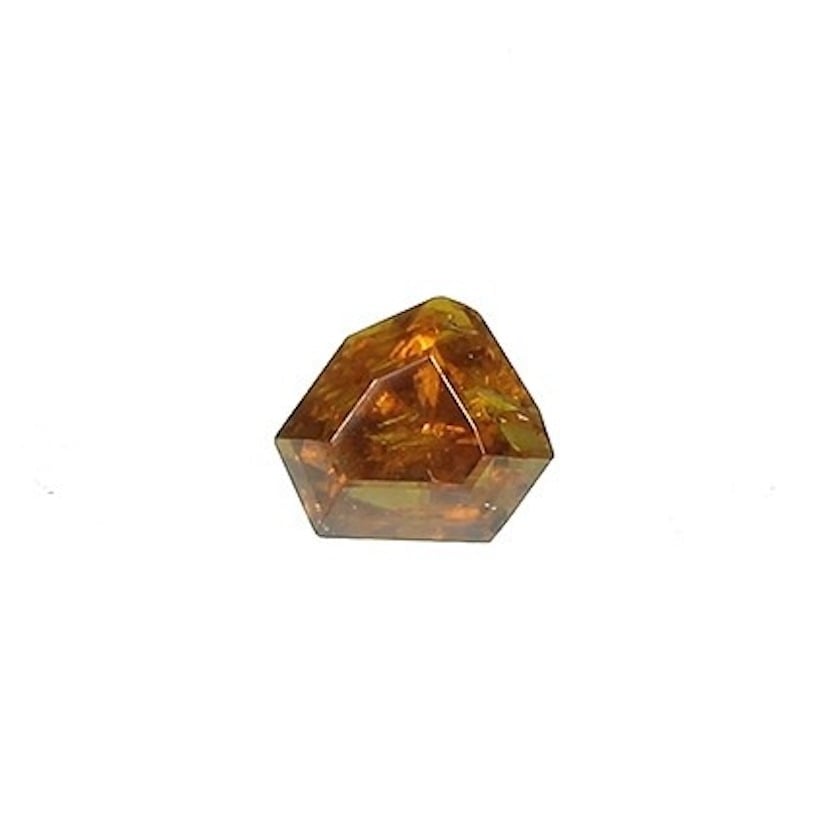Bustamite Value, Price, and Jewelry Information
Pale pink and brownish red bustamite can make a very attractive faceted gem. However, stones in large sizes are rare and difficult to cut.
2 Minute Read
Pale pink and brownish red bustamites can make very attractive faceted gems. However, stones in large sizes are rare and difficult to cut.
Start an IGS Membership today
for full access to our price guide (updated monthly).Bustamite Value
Does Bustamite Make a Good Jewelry Stone?
Bustamites are better suited for gem collections than jewelry collections. With a hardness of 5.5 to 6.5 and perfect and good cleavage planes in two directions, bustamite is susceptible to scratches and breaks. The cleavage planes also make it difficult to cut, so you will seldom find faceted bustamite gems for sale. Rarely, fibrous bustamite rough may yield fine cat's eye cabochons.
Pink bustamites will also lose their color when exposed to sunlight. If you do have bustamite jewelry, make sure to use protective settings and reserve them for occasional wear.
How Can You Distinguish Bustamite from Rhodonite?
Bustamites and rhodonites share many gemological properties, may look alike, and can occur in the same locations. (In fact, the material first identified as bustamite in 1826 turned out to be a mixture of rhodonite and johannsenite instead of a unique mineral).
Both of these gemstones prove challenging to facet, so gemologists won't encounter either very often. (Of the two, however, rhodonites are cut more frequently). Nevertheless, the following tests are the easiest ways to separate these gems:
- Take a refractive index (RI) reading. Bustamites have lower RIs (1.662-1.707) than rhodonites (1.711-1.752).
- Check the optic figure and sign. Bustamites are biaxial (-), while rhodonites are biaxial (+).
- Measure specific gravity (SG). Bustamites have a lower SG (3.32-3.43) than rhodonites (3.57-3.76).
Although not diagnostic, bustamites tend to have paler colors than rhodonites.
Are There Synthetic Bustamites?
There are no known lab-created bustamites or treatments for natural stones.
Where is Bustamite Found?
Franklin and Sterling Hill, New Jersey, USA produce fine bustamite crystals.
Broken Hill, New South Wales, Australia produces gem-quality material with a high manganese (Mn) content. It forms in crystals up to 2 x 10 cm in size and has the following properties: SG = 3.41; 2V = 39°; a = 1.688, β = 1.699, γ = 1.703; birefringence = 0.015.
Other notable gem-quality sources include the following:
- Iwate and Yamagata prefectures, Japan: gemmy crystals, very rich in Mn.
- South Africa; Långban, Sweden; Cornwall, England, UK.
Bustamite crystal under white and ultraviolet light, Wessel's Mine, Hotazel, Kalahari manganese fields, Northern Cape Province, South Africa. 6.5 x 5.7 x 3.4 cm. © Rob Lavinsky, mineralauctions.com. Used with permission.
Stone Sizes
Faceted bustamites weigh less than 5 carats and usually range from 1 to 2 carats. Any faceted gems over 2 carats would make considered rare collector's items. Cat's eye cabochons can weigh up to 5 carats.
How to Care for Bustamites
Clean your bustamites only with a soft brush, mild detergent, and warm water. Store them separately from other stones to avoid contact scratches and keep them out of direct sunlight. Consult our gemstone jewelry cleaning guide for more recommendations.
Joel E. Arem, Ph.D., FGA
Dr. Joel E. Arem has more than 60 years of experience in the world of gems and minerals. After obtaining his Ph.D. in Mineralogy from Harvard University, he has published numerous books that are still among the most widely used references and guidebooks on crystals, gems and minerals in the world.
Co-founder and President of numerous organizations, Dr. Arem has enjoyed a lifelong career in mineralogy and gemology. He has been a Smithsonian scientist and Curator, a consultant to many well-known companies and institutions, and a prolific author and speaker. Although his main activities have been as a gem cutter and dealer, his focus has always been education. joelarem.com
International Gem Society
Related Articles
Black Diamond Value, Price, and Jewelry Information
Chameleon Diamond Value, Price, and Jewelry Information
Gray Diamond Value, Price, and Jewelry Information
Green Diamond Value, Price, and Jewelry Information
Latest Articles
Quartz Toxicity: Understanding the Risks for Jewelers and Wearers
Synthetic Amethyst: What is it and How is it Made?
Hambergite Value, Price, and Jewelry Information
Pearl Simulants: How to Spot Faux Pearls
Never Stop Learning
When you join the IGS community, you get trusted diamond & gemstone information when you need it.
Get Gemology Insights
Get started with the International Gem Society’s free guide to gemstone identification. Join our weekly newsletter & get a free copy of the Gem ID Checklist!
